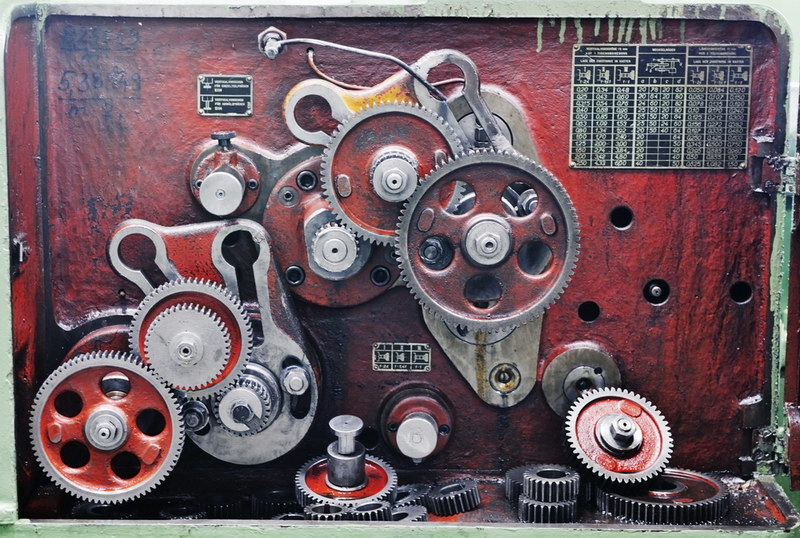Manufacturing Tooling Costs
Jan 25, 2016
Depending on the type of product your business produces and how often, tooling may be a significant cost. For some businesses, tools last a considerable amount of time. In such a scenario, given the durability of the tools and the frequency of their use, it is safe to assume the cost of the tooling is recovered in the sale of the products. However, if the margins overall are very tight, some degree of a tooling cost should be noted in the estimate.
 For specialized products, tooling is a necessity and can be traced directly to those products. This type of tooling may last a long period of time, or for only a few products, but regardless it is most likely directly related. As a result, it should be assigned directly to the given product or process and recovered through that individual product’s cost.
For specialized products, tooling is a necessity and can be traced directly to those products. This type of tooling may last a long period of time, or for only a few products, but regardless it is most likely directly related. As a result, it should be assigned directly to the given product or process and recovered through that individual product’s cost.
I met with a client a few weeks ago who wanted to factor tooling into their total product cost. However, the business was struggling do so accurately. This client’s environment was a bit different than those described above. The company currently pays for tooling required in the production of merchandise they are buying for an outside customer. The client wanted to recover this cost in the products, which is relatively simple as they know exactly with which products to associate the tooling cost. However, the greater dilemma was determining at what rate. Management attempted to approximate how many of each product would be ordered and divide the tooling cost by that amount. For example, if 1,000 parts were ordered and the tooling cost was $400 then $2.50 would be added to each item’s standard cost. However, what happens if they ordered 1,500 parts? Or only 200 parts? If 1,500 parts were ordered, then the additional cost was only $.68 per part. Does this mean the extra $1.82 is just profit? Of course extra profit is welcomed, but what if a miscalculation caused the selling price to be higher than the market would tolerate. This could create a serious issue. In the case of under costing, they would lose a substantial amount of money.
What would you recommend for tooling or what have you done that is working or maybe isn’t working?
In the end, it is most important to recover the costs as best as you possibly can. Over or under recovering can equally create issues that are not able to be sustained.
My client must continue to offer their best estimate of how many of each product will be ordered and allocate the cost that way. However, they need to make sure they are coming close to their estimates, and if not, its time to re-evaluate their process.
Categories: Cost Accounting
Cost System Updates: Avoid Letting The Tail Wag The Dog
Jan 18, 2016
I recently met with a client who is interested in updating their costing model. The organization currently has an excellent model which we helped create several years ago. However, some of the company’s processes and procedures are being modified and management recognizes the need for a cost system update.
Reviewing your costs system is essential, but it is even more important when changes to your operations occur. For instance, if you begin manufacturing a new product, or if you change the method in which a product has traditionally been made. Chances are your drivers and your allocation bases will not be as accurate.
In this particular example, the client recognized the need for system revisions given the changes in processing. They were considering producing certain products in a different manner than previously executed. The company’s current costing model displayed data stating it would be too expensive. The company questioned the data’s accuracy and wondered what it would actually cost?
An inaccurate costing system may oppose the production of an item in a particular method, but the information may be incorrect. The tail may be wagging the dog in this instance. These critical decisions cannot be made until the system is updated and accurately costing processes.
It is important to continuously review and improve your cost system. If report data does not seem realistic or accurate, take the time to review your system and make necessary adjustments. After all, an inaccurate cost system is not very useful! In addition, it is essential to evaluate the driver and allocation bases on an annual basis.
In the end, make sure you have established a reactive cost system, one which involves critical thinking about the outcomes you desire. Don’t let the tail wag the dog. Be mindful of drastic developments or fluctuations which require system updates. Having an accurate costs system can help you make effective business decisions about the future of your organization.
Categories: Cost Accounting
Making Key Performance Indicators Useful To The End User
Jan 12, 2016
A few days ago, I spoke with a business manager about a Company’s new accounting system and the information which could be derived from the system. In this specific case, the organization had spent quite a bit of time and money implementing a new system in hopes of providing management information that would significantly improve efficiencies and overall profitability. As a byproduct, the new system can now produce key performance indicators (KPIs) far more quickly and accurately than had been available in the past.
The purpose of our conversation was to determine what data users may want to measure. We talked about a variety of options, as well as report formats and frequency. We concluded the end user should ultimately decide what data should be presented, how frequently, and the format. Even though both the manager and myself may have been able to anticipate the needs, the most useful key performance indicators are those most recognizable by the end user.
I am currently working with another startup company on the same basic project. In this case, the owner of the business started without an accounting system or support, but has built a very successful business in a very short period of time based solely on client service and technical knowledge. The owner had little knowledge of the capabilities of his accounting system and therefore, had little input as to how it could be modified to better suit the needs of the company.
 It was my job to suggest KPIs the business owner would find useful in this rapidly growing, highly profitable company. What I quickly realized was this owner had no fundamental insight into the meaning of balance sheet numbers and trends or income statement numbers and trends. Therefore, he had far greater difficulty understanding how KPIs could be managed to improve the overall operation of the company. In this instance, I believe sophisticated KPIs would be too much for the owner. Instead, we are going to begin with very simple KPIs with a plan to upgrade and modify the complexity as time goes on.
It was my job to suggest KPIs the business owner would find useful in this rapidly growing, highly profitable company. What I quickly realized was this owner had no fundamental insight into the meaning of balance sheet numbers and trends or income statement numbers and trends. Therefore, he had far greater difficulty understanding how KPIs could be managed to improve the overall operation of the company. In this instance, I believe sophisticated KPIs would be too much for the owner. Instead, we are going to begin with very simple KPIs with a plan to upgrade and modify the complexity as time goes on.
I am cautious of presenting this owner with a sophisticated array of data which is of little use in their day-to-day management and therefore might be quickly ignored or completely shut down. This is not to say the information is not useful or relevant, but since the owner is not up to speed with how such information could and should be used, it is better to be mindful of the data presented. My goal is to demonstrate useful information and how it can be manipulated or interpreted to improve operations and profitability. As I consistently present new and improved KPIs over time, I believe the owner will begin to realize the value.
I have concluded that KPIs have to be relevant, timely and understood by the end users to achieve improvements in operations and profitability. Providing managers with the information required to complete their job in an efficient manner will prove to strengthen the value of gathering and using KPI data.
Categories: Cost Accounting
Change Is Not Easy
Jan 06, 2016
Over the weekend, I helped some friends move. With three young children and two adults, you can imagine the amount of “stuff” to be packed! During our time together, my friend commented, “now I know why I hate change so much, it is so much work!” Being the eternal optimist, I thought to myself: yes, but its worth it. For them, it is worth it. They moved into nice neighborhood, into a home they could call their own. One that did not require renovations like their current rental property.
I wonder how many times you have avoided change in fear of the amount of work it may involve. Revising your reporting from the shop floor, organizing the tool bin, improving communication, updating or creating your cost system, etc. All of these tasks involve a great deal of time and effort. So, what happens if you fail to make an effort to change? In the case of my friends, the rental home they occupied had major structural issues, which could have proven extremely costly and dangerous. What if they would have decided to remain? Their landlord had decided not to repair the issues. As a result, they would have spent their own money renovating, or worse, the house would have been proven unlivable. What a horrific thought!
 However, can be also be said in business as well. Without making necessary improvements, can’t your business caving in on itself? Is it not just a matter of time before it’s too late and the damage cannot be undone? Not accepting change and making improvements can result in key employees departing, the loss of customers due to poor quality and lack of service, and a deficit of quotes. The downward spiral of a firm unwilling to change or make improvements is deadly.
However, can be also be said in business as well. Without making necessary improvements, can’t your business caving in on itself? Is it not just a matter of time before it’s too late and the damage cannot be undone? Not accepting change and making improvements can result in key employees departing, the loss of customers due to poor quality and lack of service, and a deficit of quotes. The downward spiral of a firm unwilling to change or make improvements is deadly.
If you are able to remain positive and push through the difficulty of change, you will improve employee morale, enhance customer relationships, and positively impact your business as a while. The ability to expand your business, predict your costs, and remain flexible in your quoting are all vital to remaining competitive in today’s market.
Use this new year as a motivation to start fresh. Go back to the drawing board and review your business foundation. Making small improvements can have a huge impact on the future of your business. If you don’t feel you can undertake such a task, you do not have to do it alone. Contact me!
Categories: Cost Accounting
Resolve To Be Accountable
Dec 29, 2015
Can you believe 2015 is coming to and end and 2016 is starting new? This is the time when most people decide to make new years resolutions. Although this may be a good tactic for some, I actually prefer to set goals on my own terms, rather than waiting for a new year for motivation. No matter when you decide to make improvements, the fact remains, anything worth doing involves hard work, determination, and a strong work ethic. Once you are able to seem some positive results, you may realize it was not as challenging as anticipated.
The typical New Year’s resolutions include getting in shape, quitting a bad habit, eating better, getting out of debt, traveling, etc. These are all great resolutions! However, what about our professional lives? What types of resolutions could you foresee?
- Acquire more training
- Learn to use a software program more efficiently
- Minimize the use of Excel
- Accurately determine your costs
- Improve cash flow and remain consistent
Surely there are additional goals to be set for your professional life. Take some time to define what is important to you or your organization for the new year. If you are able to outline a plan for achieving your objectives, you are well on your way. Accountability is essential for reaching your goals. Sometimes it may seem easier to give up rather than continue to be accountable to someone.
Please feel free to contact me! I am more than willing to help you pursue your objectives and help you remain accountable. Having the support of a colleague or a consultant can be the difference between success and failure. Regardless, whatever you decide to do, I challenge you to write to me in the comments or contact me. Let me help you be accountable to your goals and seeing them through until the end. Can you imagine how amazing 2016 will be if you do?
Categories: Cost Accounting


